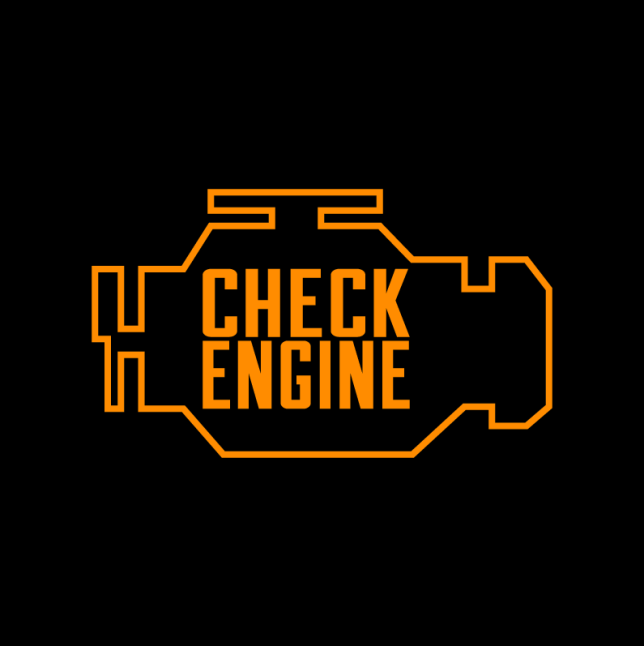To begin with, here are some of the causes that bring on the Check Engine light:
- O2 sensor (part of the emissions system, monitoring and helping adjust the air-fuel mixture)
- Loose gas cap
- Catalytic converter
- Mass air flow sensor (monitoring the amount of air mixed in the fuel injection system)
- Spark plug wires
Nonetheless, how much should you worry? The answer is in the type of light that comes on. Let’s elaborate:
Glowing
If the light–technically known as a Malfunction Indicator Lamp–is illuminated with a steady glow, that means that there’s been some kind of error in the engine control system.
So if you see the light glowing, take the car in to a mechanic as soon as possible.
Any service technician can connected an analyzer to the car’s data port (known as “OBD-II,” in case you hear the term) to read the specific error code that caused the light to go on.
There are many different causes, ranging from the mundane–perhaps a tiny leak in the car’s gasoline vapor-trapping system–to the potentially expensive, like intermittent failure by a computer processor or contaminated fuel.
Flashing
But, if your ‘Check Engine’ light is flashing, that means there’s something seriously and immediately wrong that might result in damage to the car’s catalytic converter.
That’s when you want to pull the car over safely, turn it off, and have it taken to a garage.
Your whole goal here is to avoid damaging the catalytic converter, which costs several hundred dollars to replace if it’s been “poisoned” by exhaust gases that are different than those it was designed to accept.
The ‘Check Engine’ light was mandated by the U.S. Environmental Protection Agency in the 1980s, as vehicle emission-control systems got more complex to comply with stricter limits on exhaust emissions.
It largely replaced the engine-warning light previous used on some cars, which could indicate anything from misfiring ignition to complete loss of oil pressure.
****
Related Tips
If the light comes on, the driver should first see if the gas cap is loose: That’s a common cause. A loose cap sends an error message to the car’s computer, reporting a leak in the vapor recovery system, which is one aspect of a car’s emissions system. If the gas cap is loose, tighten it and continue driving. Even so, it will take some time for the light to go off, he says.
Occasionally, the Check Engine light comes on when nothing is wrong with the car. It could be a temporary problem caused by a change in humidity or other factors. In such cases, the light should go off by itself after a short time.








